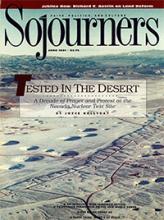America, the land that we love, is withering beneath human pollution. Twenty years ago Harry Cauldill chose the title My Land is Dying to convey the devastation wrought by strip mining for coal upon the mountains where he, and I, reside. Sadly, this title also applies to the farms of the Midwest, the grainfields of the high plains, and even the fruitful valleys of California. Our land is dying!
Ironically, these lands are being depleted of both natural life and human population. The ecological and social distress derive from the same causes.
The forests and grasslands of America once teemed with life in complex ecosystems. During three centuries forests were cleared and grasslands were plowed for agriculture. At first this clearing accommodated an influx of human settlement on farms where many grains and crops sustained livestock, fowl, and families, along with wild birds and small game. During the past 40 years, however, modern farming has not only depleted the vitality of croplands but driven people, wildlife, and livestock from these regions.
Strip mining has done the same in mineral regions. When I began my Appalachian ministry in 1959, the devastating assault by giant earth-moving machinery upon the natural and human community was well under way.
Under pressure from federal law, strip mining practices have improved a little since then, but the basic conditions remain. Eighty percent of the land in the southern Appalachian coalfields is owned by coal and land companies. Millions of unreclaimed acres -- called "orphan lands" because no company accepts legal responsibility to reclaim them -- continue to erode and pollute their environment. As coal employment diminishes, there is little opportunity for an Appalachian people who, although rural, have been rendered landless.
Read the Full Article

